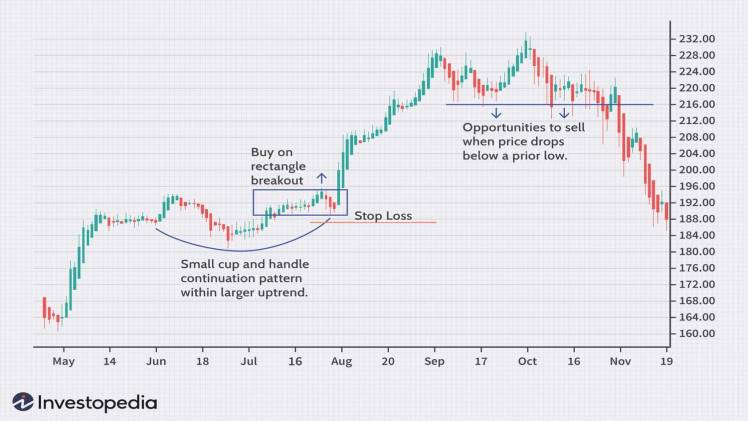Understanding the Concept of Swing Trading in Forex

Swing trading can be best described as a trading style where one tries to get hold of short and medium-term gains in a financial instrument like a stock. A swing trading phase could last for a couple of days or extend up to several weeks. Visit MultiBank Group
To get lucrative trading opportunities, swing traders mostly resort to technical analysis. However, every trader has their own style and approach. There are many traders who, apart from analyzing patterns and trends pertaining to price, also opt for fundamental analysis.
Swing Trading Explained
Swing Forex Trading is a trading strategy that is used in the foreign exchange market to capitalize on short-term price movements. This strategy can be applied to any currency pair, but it’s most often applied to major currency pairs such as EUR/USD or GBP/USD. The idea behind Swing Forex Trading is to invest in currencies when they are trending upwards and sell them when they are trending downwards. The goal of this type of trading is not only to make money from fluctuations in the value of one currency, but also from fluctuations between two different currencies as well.
Pros and Cons of Swing Trading
Many swing traders make their assessment of trades based on risk and/or reward. After going through an asset’s chart, they figure out the kind of position they will enter, where a stop loss will be placed and then, they will try to determine the right time for exiting with a profit.
If a trader is putting $5 per share in a system at risk where there is a possibility of gaining $8, it would be considered to be a good risk/reward ratio. However, risking $5 to make $3 would not be advisable.
Owing to the short-term design of the trades, swing traders largely use technical analysis. However, as stated earlier, the analysis could be made stronger by adding fundamental analysis to it. If a swing trader comes across a bullish stock setup, they might wish to check whether the asset’s fundamentals appear to be favorable or not.
Swing traders refer to daily charts to look for new opportunities. They could also go through 15-minute or 1-minute charts to arrive at a good entry, stop loss or gauge take-profit levels. The daily, therefore, prove to be useful for swing traders.
Pros of swing trading:
- Swing trading requires lesser time than day trading.
- It helps in increasing the chances of maximizing profits on a short-term basis.
- The trading process gets simplified.
Cons of swing trading:
- Trade positions get exposed to weekend and overnight market risk.
- Sudden market reversals lead to massive losses.
- Long-term trends often get overlooked.
Difference Between Day Trading and Swing Trading
Day traders enter and exit the market in a single day. Swing traders, on the other hand, hold their positions for weeks or months at a time. Day trading is short-term trading in which an investor buys and sells stocks within a few days. Day traders typically buy stocks that they believe will rise in value over the course of one day to a week. Swing trading is long-term trading that can last from days to months. Swing traders are more interested in the price movement of stocks than making quick profits by buying and selling them quickly.
Techniques Used in Swing Trading
A swing trader is always in search of multi-day chart patterns. A few of the most popular patterns are cup-and-handle patterns, moving average crossovers, head and shoulder patterns, triangles and flags. To put together a robust trading plan, a trader could use key reversal candlesticks along with some relevant indicators.
At the end of the day, every swing trader puts together a strategy and plan in order to get an advantage over some of the other trades being placed. Swing traders search for trade setups that could drive them towards predictable movements in the price of an asset.
Keep Updating Your Trading Strategy
As a swing trader, you must remember that a particular strategy that worked in the past might not work the next time. While putting together a setup or strategy, you must take into account the market conditions. This is one of the reasons why you should study the market extensively and understand how it works before getting into swing trading.
Risk-to-Reward Ratio
If the risk or reward ratio is favorable, it is okay if you don’t win every single time. While engaging in swing trading, it is important for you to work towards ensuring that your risk/reward ratio is always healthy.
Securities
A swing trader could become successful using a variety of securities. However, the most lucrative securities prove to be large-cap stocks. These stocks have often been described as the most widely traded stocks on the big exchanges. Know more operar durante los 7 días de la semana
When these stocks are a part of an active market, they will keep moving between high and low points. Swing trades prove to be extremely relevant in forex markets and actively traded commodities.




